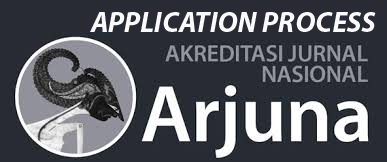Analisis Kebijakan UU Nomor 1 Tahun 2024 (untuk Penanganan Cyber Bullying) dengan Perspektif Problem Tree Analysis
DOI:
https://doi.org/10.58684/jarvic.v3i2.144Keywords:
Public Policy, Cyberbullying, ITE LawAbstract
Acts of cyberbullying are increasingly common in Indonesia. Whatsapp, Instagram and Facebook were identified as the top three social media platforms used by perpetrators to commit cyberbullying. Law Number 1 Year 2024 on Electronic Information and Transactions (ITE Law) provides the legal basis for addressing cyberbullying in Indonesia. Although the ITE Law provides a strong legal basis for dealing with cyberbullying, there are still challenges in its implementation. The method used in this research is a literature study by tracing various literature related to the analysis of the ITE Law, and handling cyberbullying. In addition, the author also analyzes the problem using the problem tree analysis method. In this study, it was found that the ITE Law has provided a clear legal framework for handling cyberbullying, but in its implementation it still faces several obstacles, such as the legal process is often slow and bureaucratic, there is a misalignment between central and regional regulations, and people who do not understand the provisions of the ITE Law and how to report cyberbullying cases. So that in handling cyberbullying, the active role of various parties is still needed, including the government, educational institutions, families, and digital platforms.
References
Asriani, D. D., Yulianti, K. Y., Priwati, A. R., Kirana, A. P., Darmawan, P., & Kusumaningtyas, A. P. (2021). Teenager-related cyberbullying case in Indonesia. Center for Digital Society, 8-9.
Dewan Perwakilan Rakyat Republik Indonesia. (2023, September 8). Arogansi gaya hedonistik istri oknum polisi harus ditindak sebelum viral. Retrieved from https://www.dpr.go.id/berita/detail/id/46387/t/Arogansi%20Gaya%20Hedonistik%20Istri%20Oknum%20Polisi%20Harus%20Ditindak%20Sebelum%20Viral
Eryandi. (2023). Integrasi nilai-nilai keislaman dalam pendidikan karakter di era digital. Kaipi: Kumpulan Artikel Ilmiah Pendidikan Islam.
Ikhsanudin, A. (2023, September 7). KPAI: Luluk Nuril lakukan cyberbullying, korban hilang percaya diri. Retrieved from https://news.detik.com/berita/d-6918297/kpai-luluk-nuril-lakukan-cyberbullying-korban-hilang-percaya-diri
Indrayani, S. A., & Johansari, C. A. (2019). Cyberbullying use on teenage artists and its implications on increasing awareness of bullying. Litera, 275-296.
Komisi Perlindungan Anak Indonesia. (2020). Laporan tahunan KPAI: Kasus bullying di media sosial. Retrieved from Komisi Perlindungan Anak Indonesia.
Komisi Perlindungan Anak Indonesia. (2021, Mei 18). Data kasus perlindungan anak 2016 – 2020. Retrieved from https://bankdata.kpai.go.id/tabulasi-data/data-kasus-perlindungan-anak-2016-2020
Kowalski, R. M., Giumetti, G. W., Schroeder, A. N., & Lattanner, M. R. (2014). Bullying in the digital age: A critical review and meta-analysis of cyberbullying research among youth. Psychological Bulletin, 1073.
Kowalski, R. M., Limber, S. P., & Agatston, P. W. (2012). Cyberbullying: Bullying in the digital age. John Wiley & Sons.
Law, D. M., Shapka, J. D., Hymel, S., Olson, B. F., & Waterhouse, T. (2012). The changing face of bullying: An empirical comparison between traditional and internet bullying and victimization. Computers in Human Behavior, 226-232.
Menesini, E., Nocentini, A., Palladino, B. E., Frisén, A., Berne, S., Ortega-Ruiz, R., . . . Smith, P. K. (2012). Cyberbullying definition among adolescents: A comparison across six European countries. Cyberpsychology, Behavior, and Social Networking, 455-463.
Navarro, R., Yubero, S., & Larrañaga, E. (2015). Psychosocial risk factors for involvement in bullying behaviors: Empirical comparison between cyberbullying and social bullying victims and bullies. School Mental Health, 235-248.
Pabian, S., & Vandebosch, H. (2014). Using the theory of planned behaviour to understand cyberbullying: The importance of beliefs for developing interventions. European Journal of Developmental Psychology, 463-477.
Patchin, J. W., & Hinduja, S. (2015). Measuring cyberbullying: Implications for research. Aggression and Violent Behavior, 69-74.
Pereira, N., Ferreira, P., Simão, A. M., Paulino, P., Oliveira, S., & Mora-Merchán, J. A. (2021). Aggressive communication style as predictor of cyberbullying, emotional well. Educational Psychology.
Priwati, A. R. (2020). Pelampung di derasnya arus informasi: Riset-riset cyberpsychology. Yogyakarta: Zahir Publishing.
Rao, T. S., Bansal, D., & Chandran, S. (2018). Cyberbullying: A virtual offense with real consequences. Indian Journal of Psychiatry.
Undang-Undang Nomor 1 Tahun 2024 tentang Informasi dan Transaksi Elektronik.
Undang-Undang Nomor 11 Tahun 2012 tentang Sistem Peradilan Anak.
Wismabrata, M. H. (2022, Juli 21). Bocah SD korban perundungan di Tasikmalaya meninggal, praktisi ungkap dampak kekerasan siber. Retrieved from https://regional.kompas.com/read/2022/07/21/110054478/bocah-sd-korban-perundungan-di-tasikmalaya-meninggal-praktisi-ungkap-dampak?page=all#google_vignette















